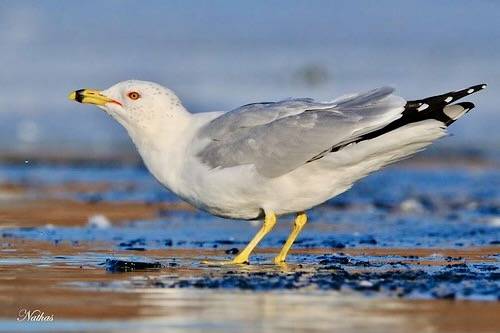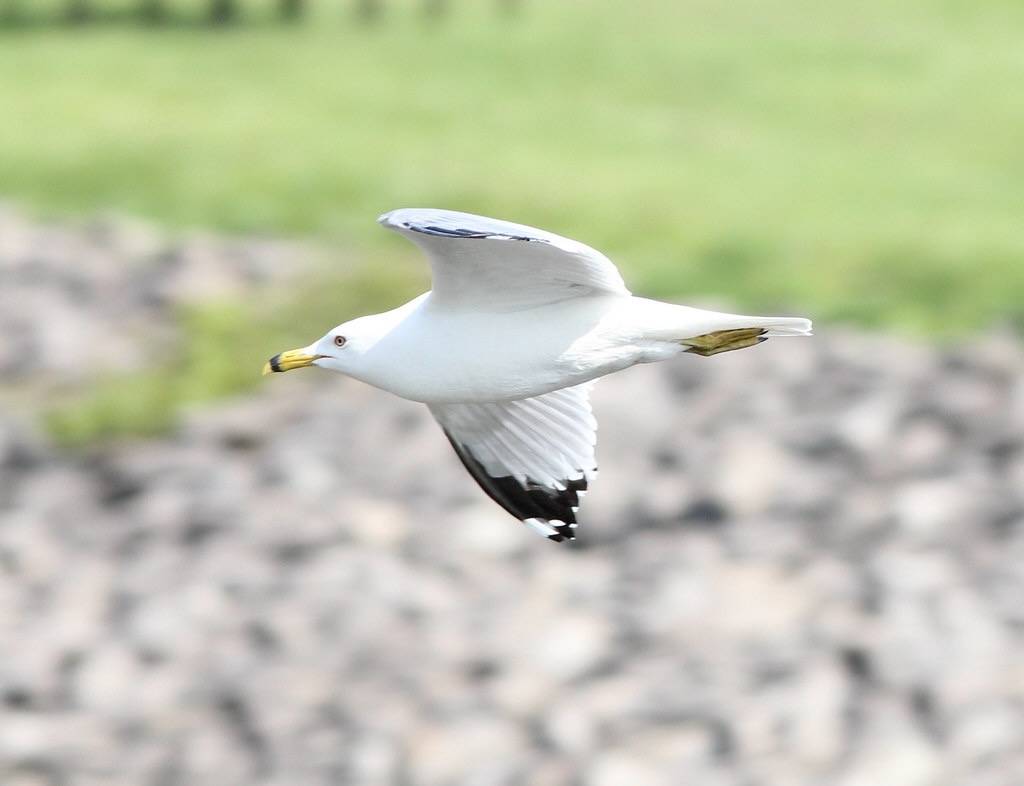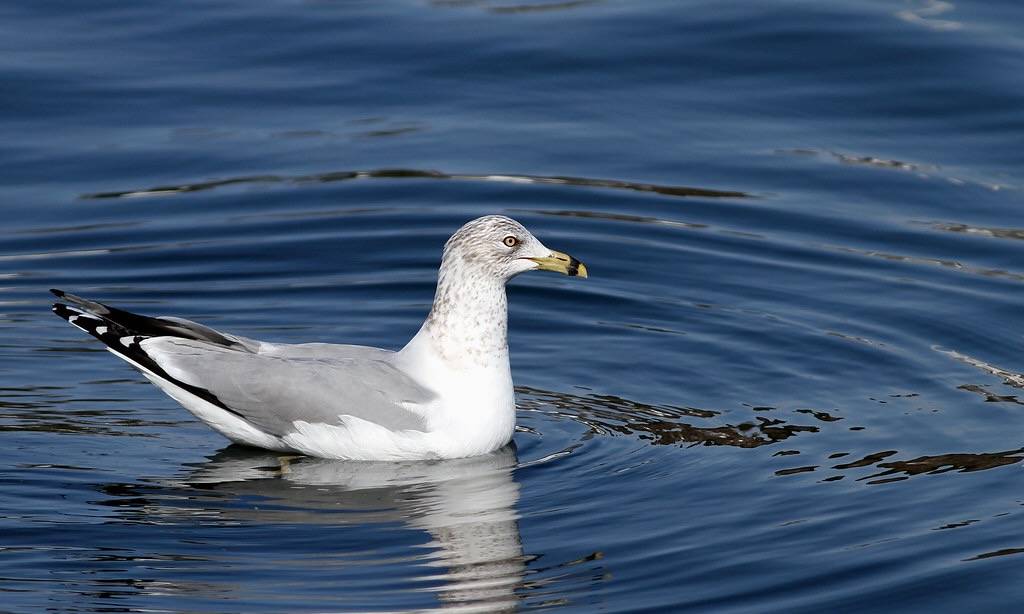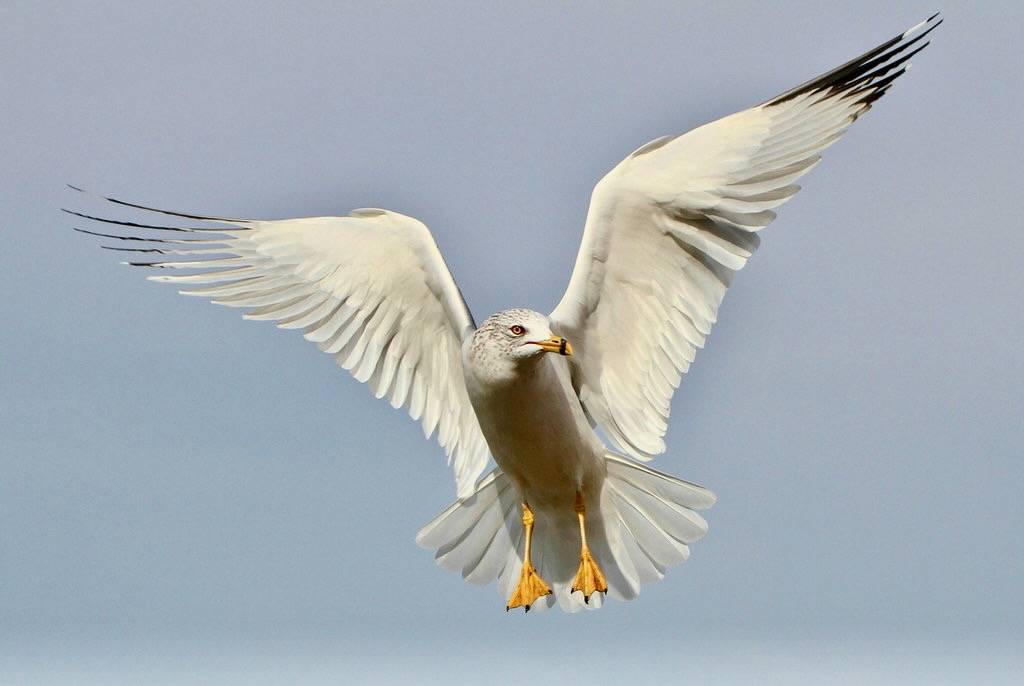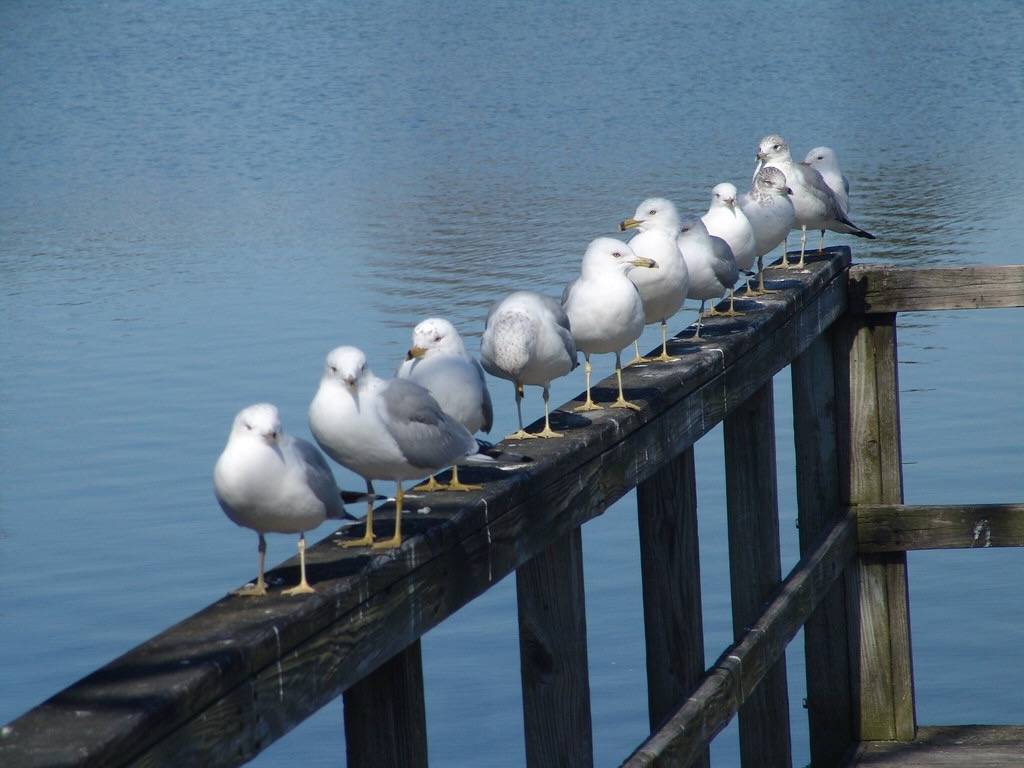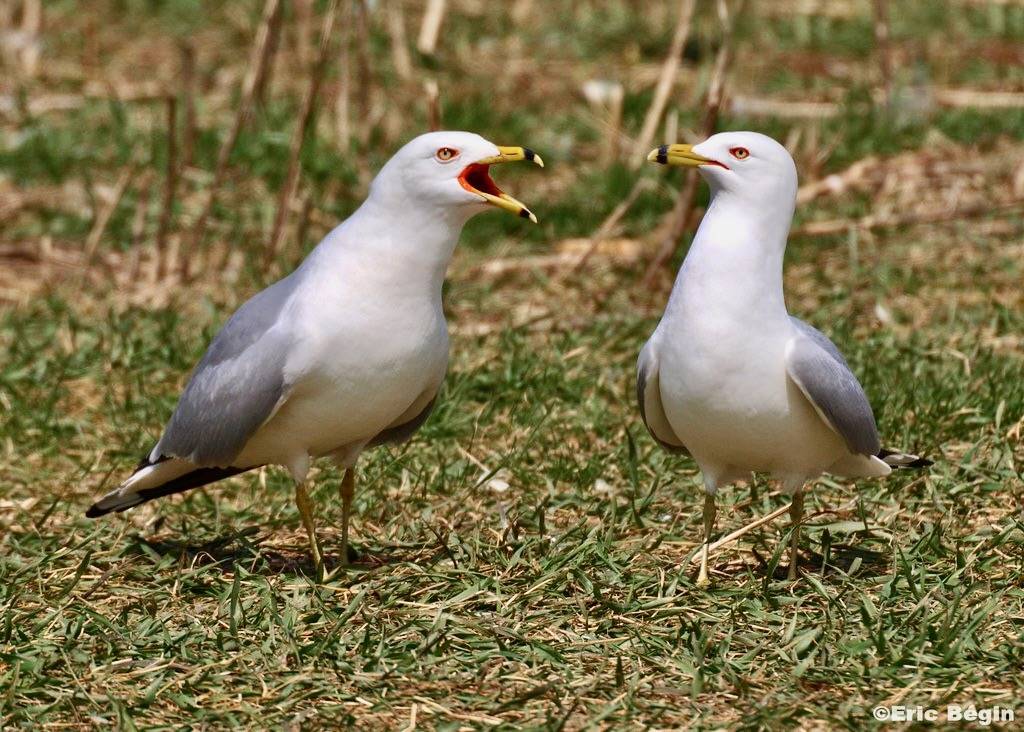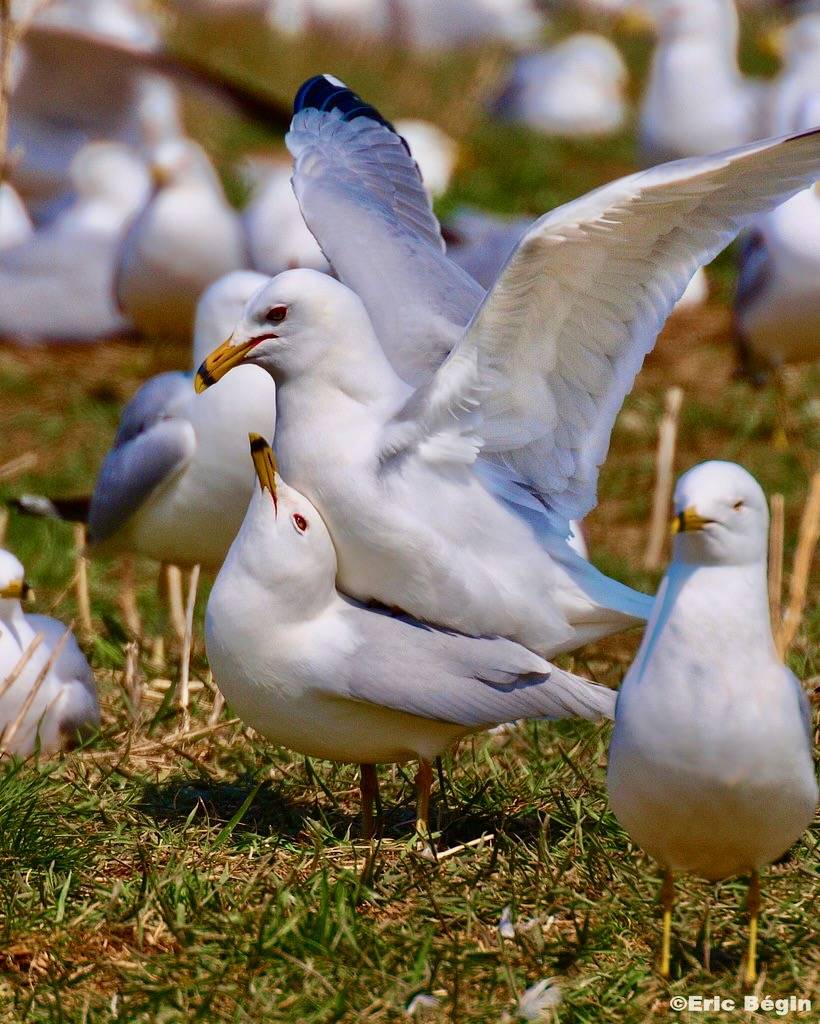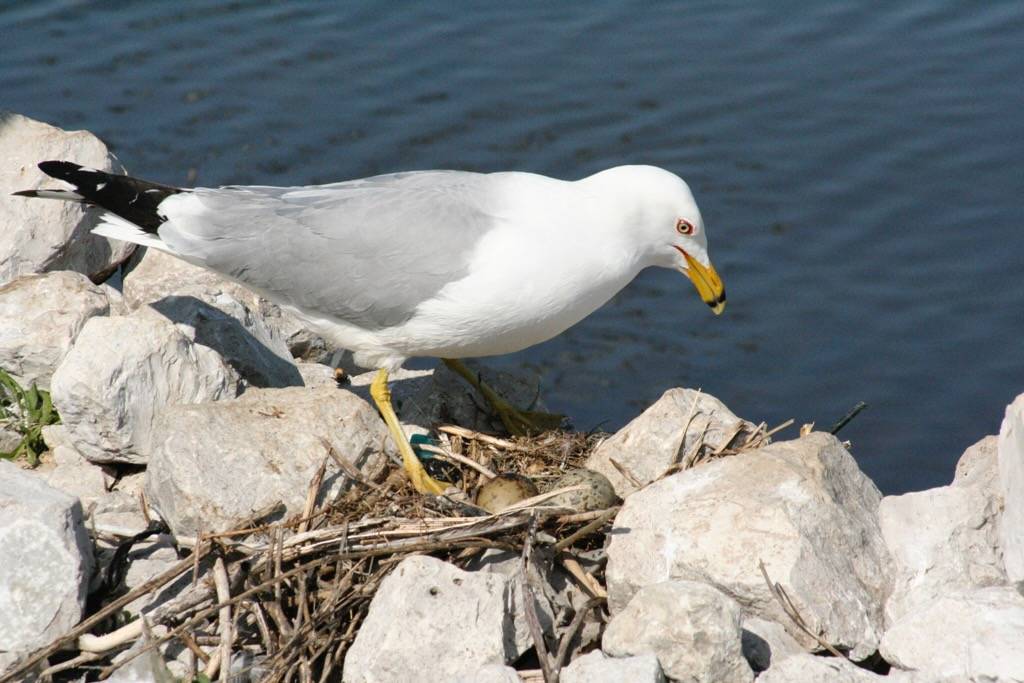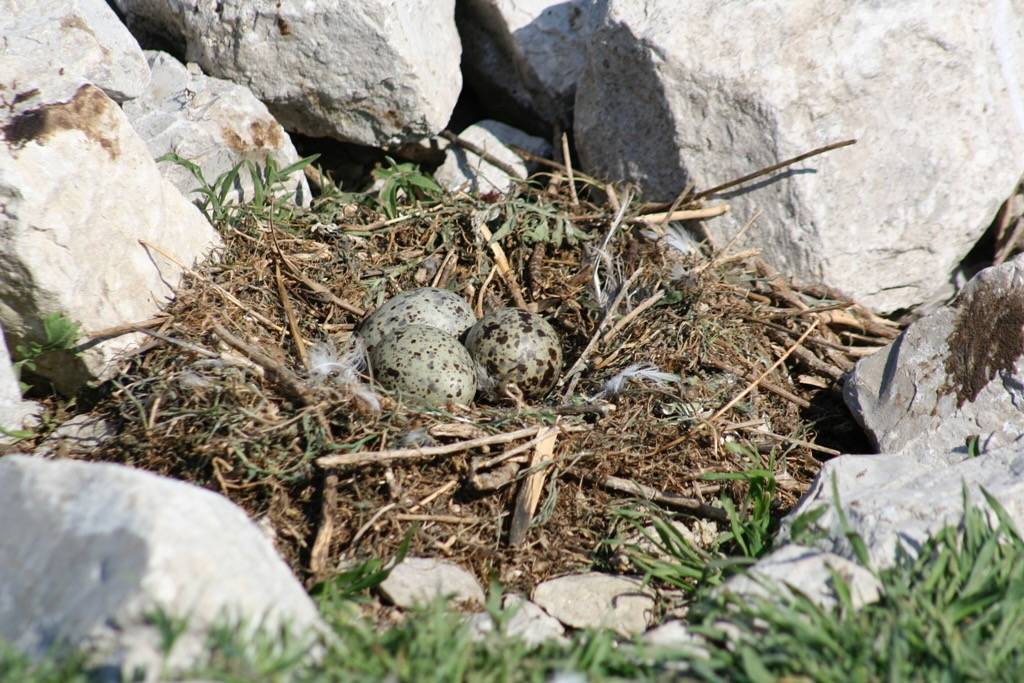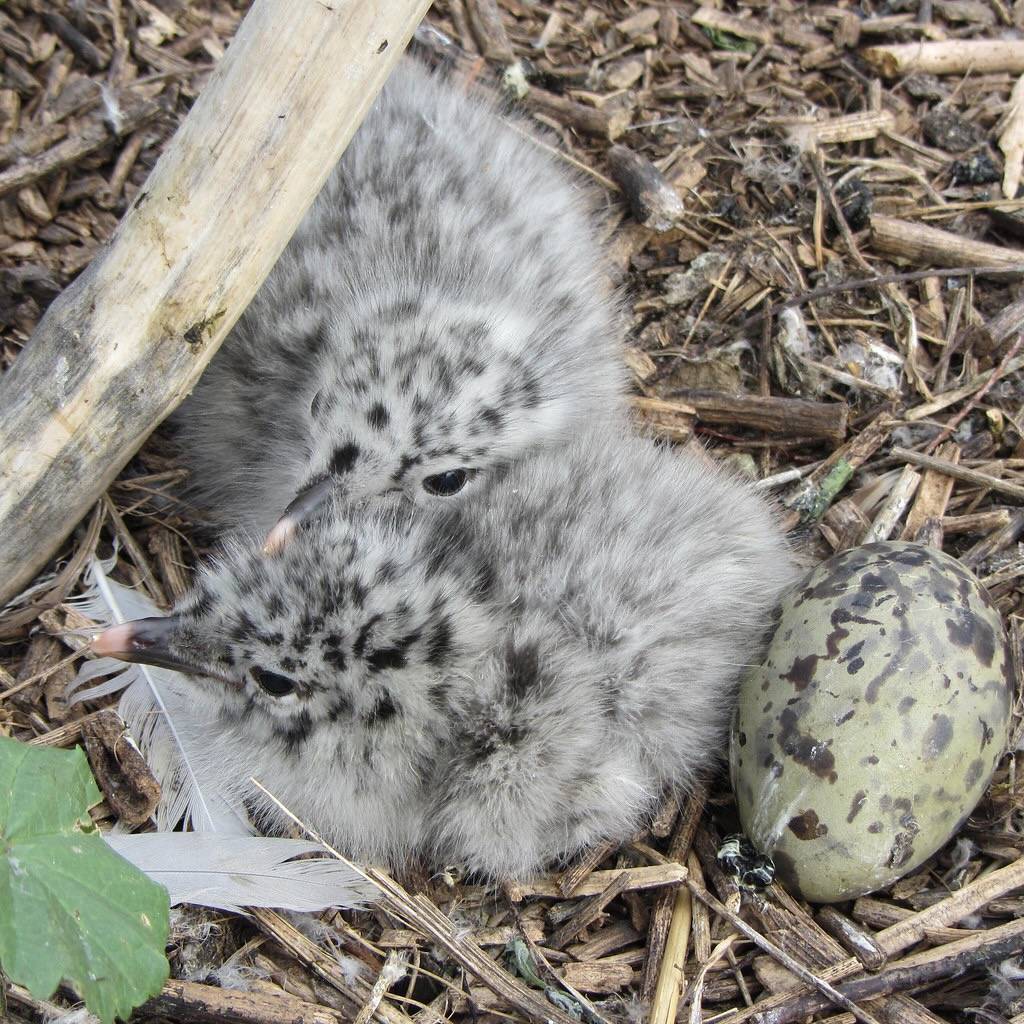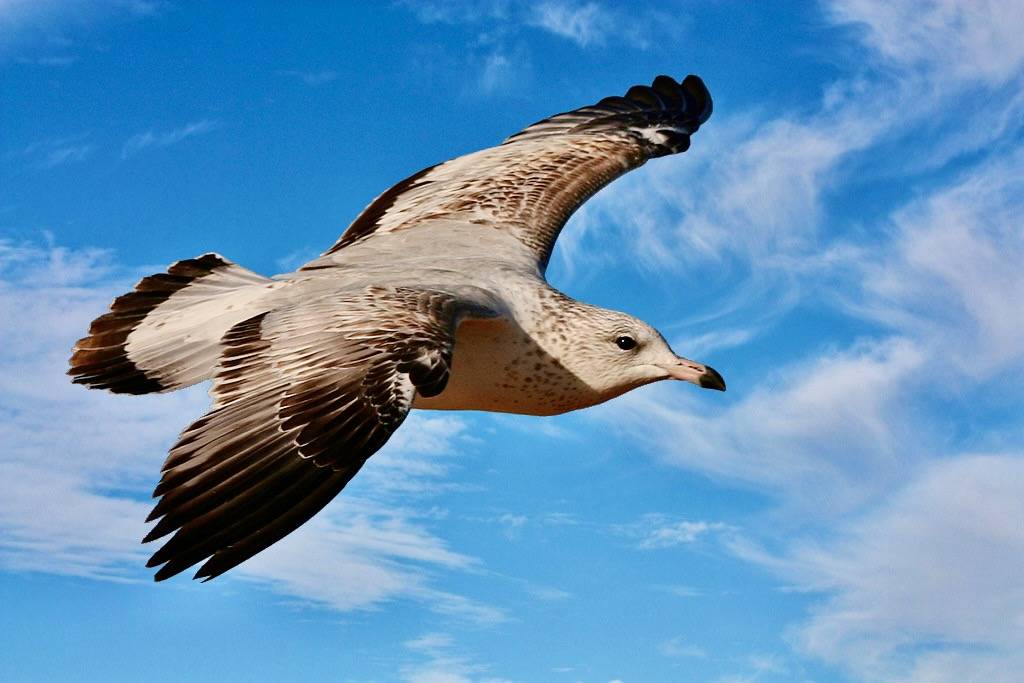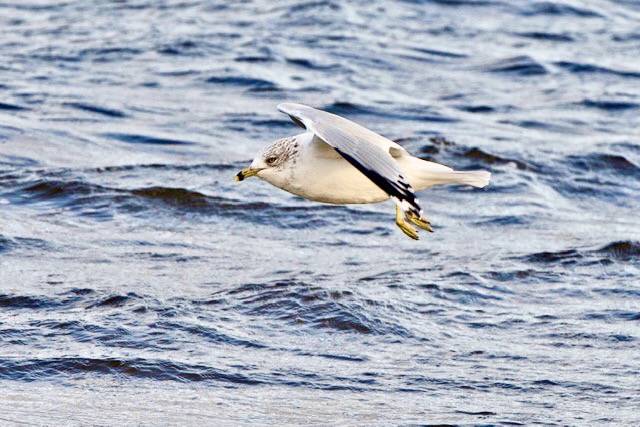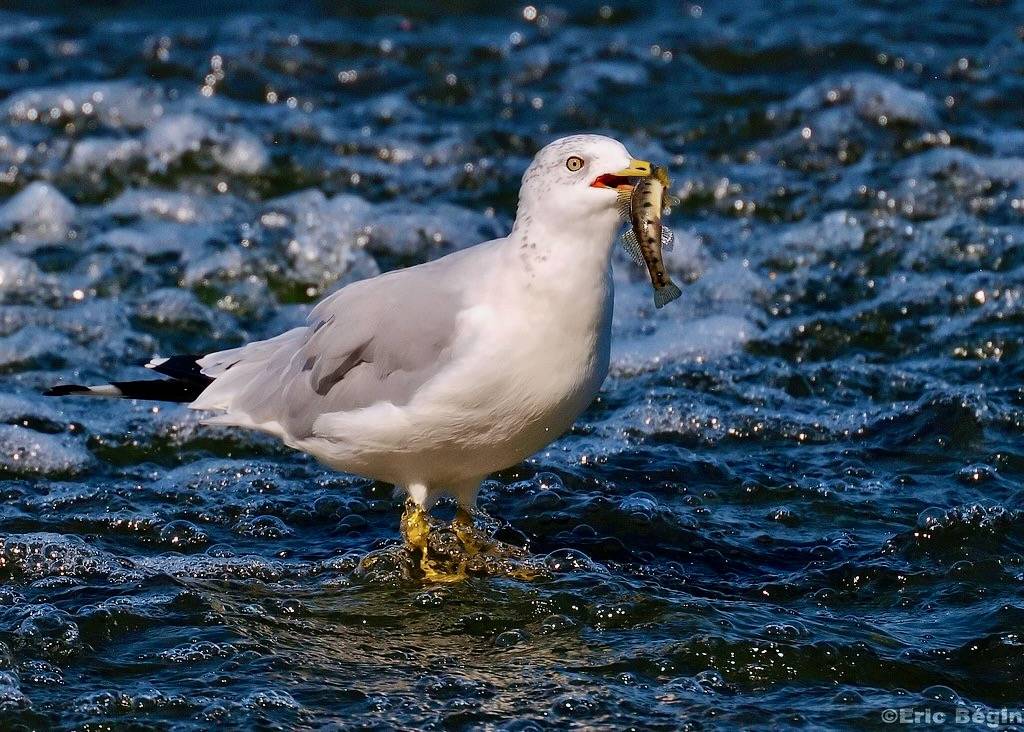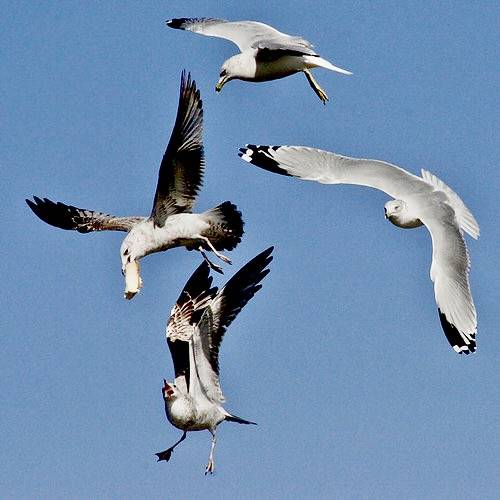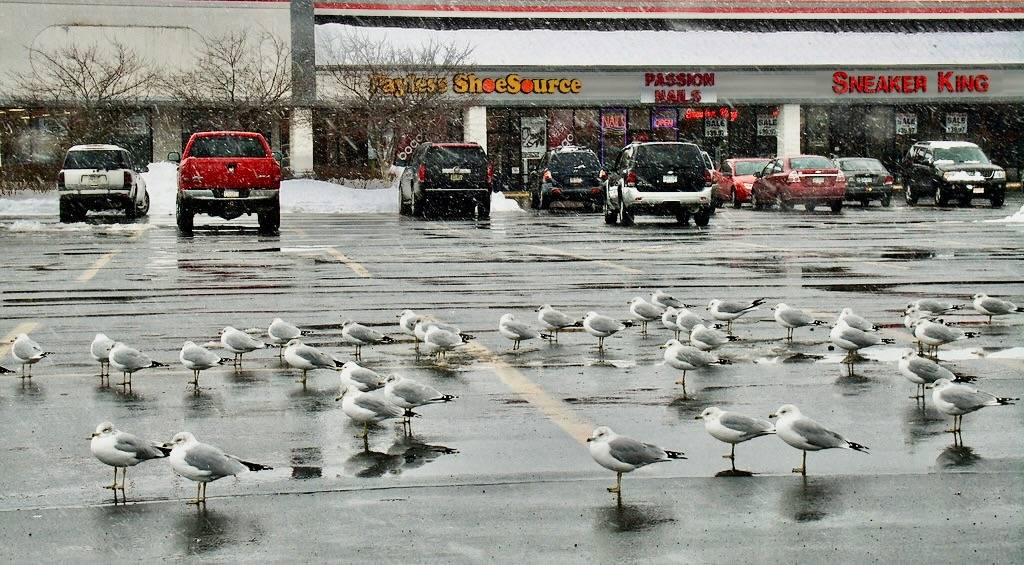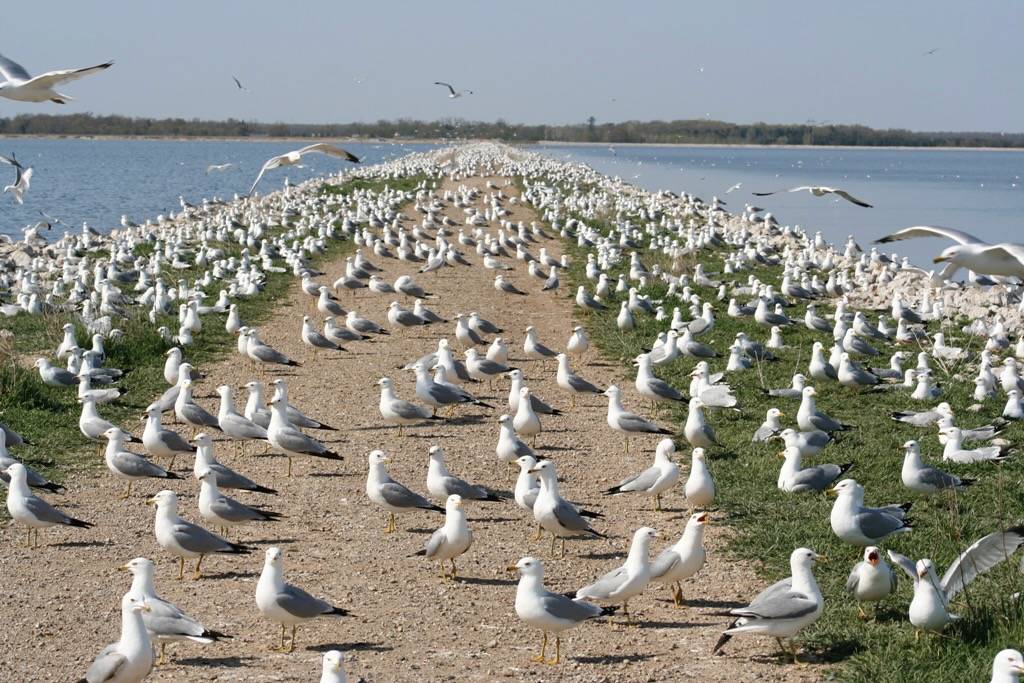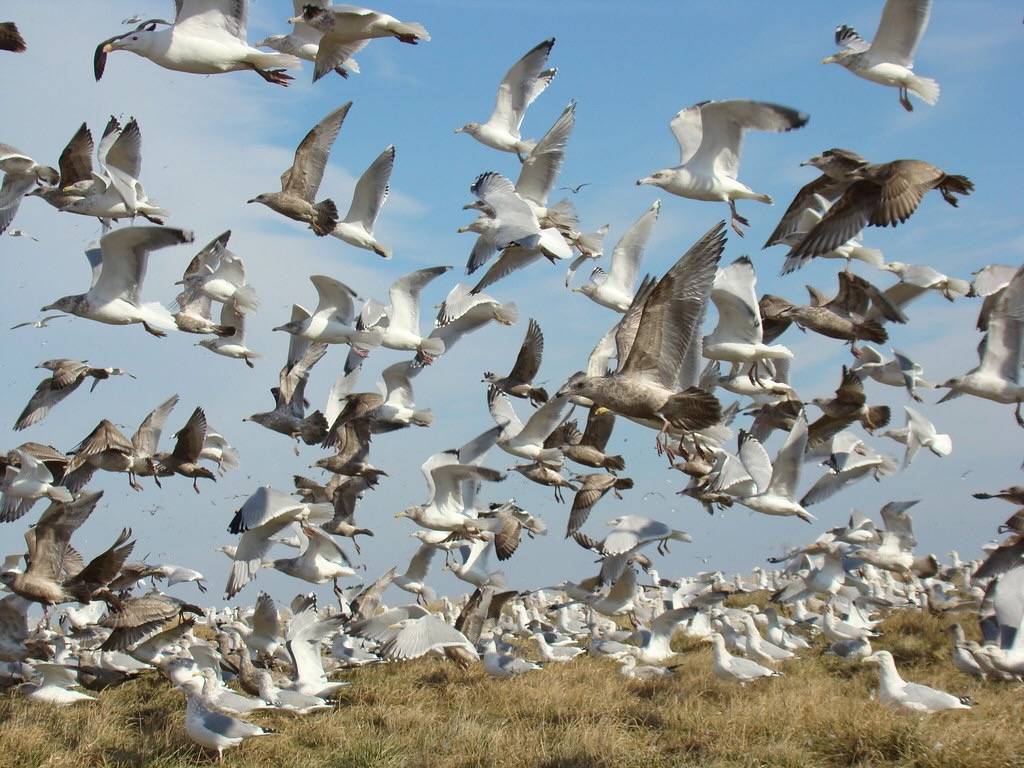Ring-billed Gull
Ring-billed Gulls have been recorded throughout the year at Salter Grove. However, they do not breed in the park and are relatively scarce during the warmer months. They are more abundant in winter, often in the company of the larger Herring Gulls. At low tide, they congregate with conspecifics on exposed mudflats in North Cove in front of the Narragansett Village condominiums, or on Marsh Island. Large numbers also perch on the small piers jutting into North Cove.
A distant flock consisting of only Ring-billed Gulls can easily be misidentified as Herring Gulls because both species have silver-gray plumage above. However, a closer look of both yellow-billed species will reveal that the Ring-billed Gull has a black ring around its bill near the tip whereas the Herring Gull has a bright red dot near the tip of its lower bill. Yellow legs on a seagull flying overhead would point to the Ring-billed and pink legs to a Herring Gull.
Ring-billed Gulls are colonial nesters of open habitats near lakes and rivers across southern Canada and northern United states. After breeding, they migrate to the Gulf of Mexico or along both North American coasts where the water remains ice-free, rarely venturing out to sea.
They are notable because sometimes two females share a nest and mate, resulting in nests with six eggs. Depending on food availability, a female would usually lay from one to three eggs. From year to year, birds may be more faithful to a successful nest site than to a specific mate.
Its omnivorous diet includes earthworms, fish, fruits, grains, grubs, insects, and rodents. It has adapted extremely well to foraging on human food waste in agricultural fields, garbage dumpsters, landfills, parking lots, sewage plants--sometimes doing so in the hundreds.

